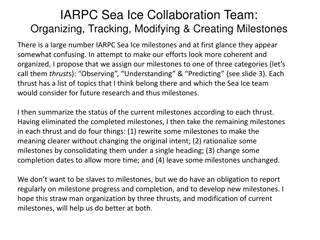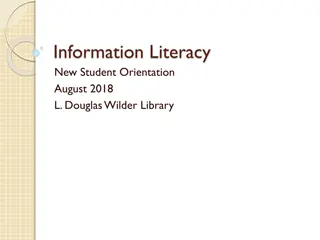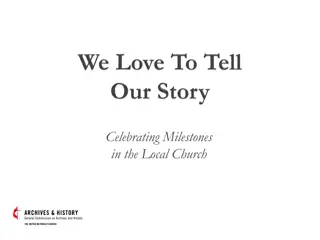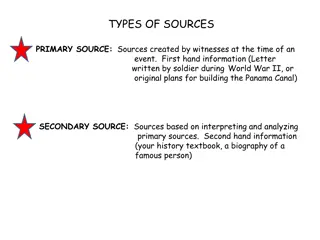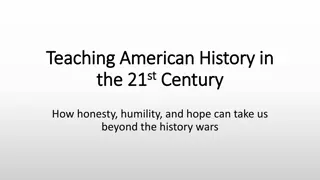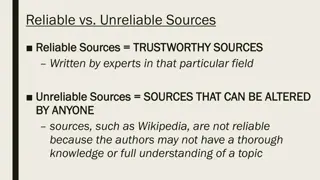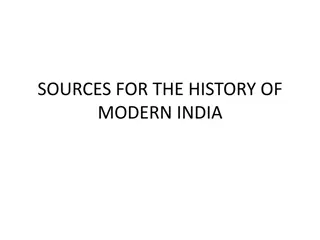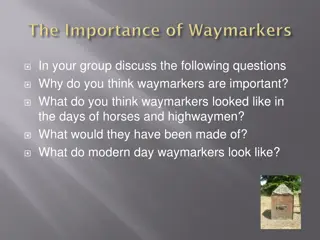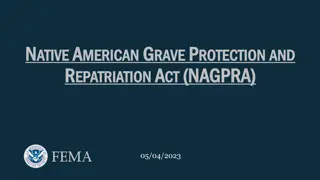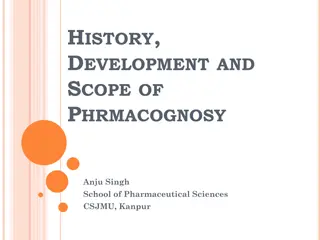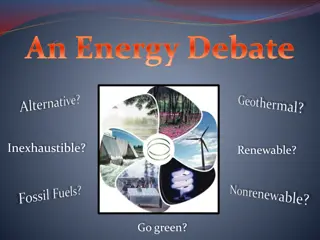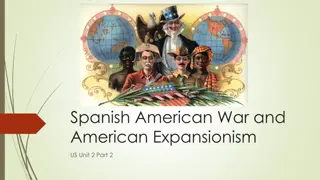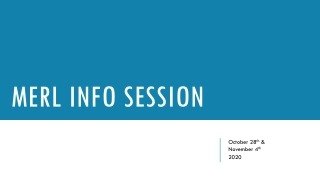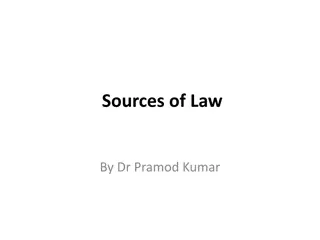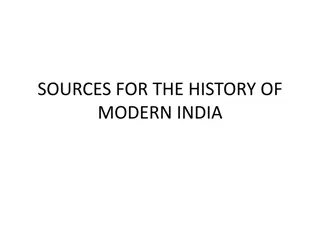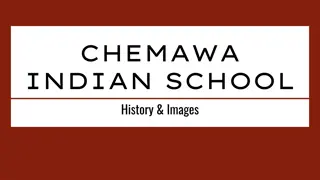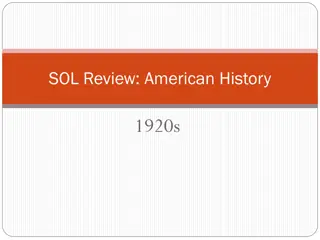Important Milestones in American History and Sources of Information
This content provides a comprehensive overview of different types of historical sources, crucial dates in American history, significant time periods post-Civil War, and key historical documents like the Declaration of Independence. It distinguishes between primary and secondary sources, lists important dates from the Declaration of Independence to modern events like 9/11, discusses essential periods in American history, and details the contents and significance of the Declaration of Independence.
Download Presentation

Please find below an Image/Link to download the presentation.
The content on the website is provided AS IS for your information and personal use only. It may not be sold, licensed, or shared on other websites without obtaining consent from the author. Download presentation by click this link. If you encounter any issues during the download, it is possible that the publisher has removed the file from their server.
E N D
Presentation Transcript
TYPES OF SOURCES PRIMARY SOURCE: Sources created by witnesses at the time of an event. First hand information (Letter written by soldier during World War II, or original plans for building the Panama Canal) SECONDARY SOURCE: Sources based on interpreting and analyzing primary sources. Second hand information (your history textbook, a biography of a famous person)
IMPORTANT DATES DELCARATION OF INDEPENDENCE CONSTITUTION CIVIL WAR SPANISH-AMERICAN WAR WORLD WAR I STOCK MARKET CRASH GREAT DEPRESSION WORLD WAR II SPUTNICK LAUNCHES US/SOVIET SPACE RACE MARTIN LUTHER KING JR. ASSASSINATED U.S. LANDS ON THE MOON COLD WAR ENDS 9/11 ATTACKS ON WORLD TRADE CENTER/PENTAGON OBAMA (FIRST AFRICAN-AMERICAN PRESIDENT) 1776 1787 1861-1865 1898 1914-1918 1929 1939-1945 1957 1968 1969 1991 2001 2008
TIME PERIODS OF AMERICAN HISTORY (PAST THE CIVIL WAR) INDUSTRIALIZATION & THE GILDED AGE THE PROGRESSIVE ERA WORLD WAR I ROARING TWENTIES GREAT DEPRESSIOIN & THE NEW DEAL WORLD WAR II COLD WAR NEW MILLENNIUM CIVIL RIGHT SIXTIES WOMEN S RIGHTS WATERGATE REAGAN
DECLARATION OF INDEPENDENCE Mostly written by Thomas Jefferson Gave reasons why colonists wanted (demanded) independence from Great Britain. Listed the grievances of American colonists against the British King (the things King George III had done wrong) Said that the purpose of government was to protect citizens (unalienable) rights to life, liberty and the pursuit of happiness Justifies the overthrow of the government that abuses the rights of the people
DECLARATION OF INDEPENDENCE When in the Course of human events, it becomes necessary for one people to dissolve the political bands which have connected them with another We hold these truths to be self-evident, that all men are created equal, that they are endowed by their Creator with certain unalienable Rights, that among these are Life, Liberty and the pursuit of Happiness.- -That to secure these rights, Governments are instituted among Men, deriving their just powers from the consent of the governed, --That whenever any Form of Government becomes destructive of these ends, it is the Right of the People to alter or to abolish it, and to institute new Government, laying its foundation on such principles and organizing its powers in such form, as to them shall seem most likely to effect their Safety and Happiness...
PEOPLE TO KNOW (REVOLUTION) JOHN TRUMBULL, SR: Colonial governor who sided with the colonists against the British JOHN PETER MUHLENBERG:Clergyman who recruited soldiers to fight the British JOHN JAY: Helped write Federalist Papers; first Chief Justice of Supreme Court; negotiated Jay Treaty (boundaries with England)
PEOPLE TO KNOW (REVOLUTIONDeclaration signers) BENJAMIN RUSH: Father of American Medicine; signed the Declaration of Independence JOHN WITHERSPOON: Signer of the Declaration of Independence, President of New Jersey College (Princeton) JOHN HANCOCK: President of Second Continental Congress, signed the Declaration of Independence (big signature)
ALEXIS DE TOCQUEVILLE Frenchman who came to the United States Wrote Democracy in America. Identified 5 key characteristics of American democracy that set us apart from Europe: LIBERTY EGALITARIANISM (EQUALITY) INDIVIDUALISM POPULISM LAISSEZ-FAIRE
BILL OF RIGHTS Passed to provide protections for the individual and to assure acceptance of the Constitution First Amendment provides freedom of speech, religion, press. Provides right to assemble and to petition the government to correct wrongs. Second Amendment provides the right to bear arms. Third Amendment protects citizens from having to quarter (house) soldiers. Fourth Amendment says no unreasonable search or seizure Fifth Amendment established due Process protections no self incrimination Sixth Amendment provides speedy, public trial/ right to confront witnesses/ right to counsel Eighth Amendment prohibits cruel and unusual punishment; no excessive bail
U.S. CONSTITUTION (1787) Replaced the ARTICLES OF CONFEDERATION Set up a new national government Set up three branches of government: EXECUTIVE (President) LEGISLATIVE (Congress) JUDICIAL (Supreme Court) Provided system of Checks and Balances to ensure no branch too powerful.
E PLURIBUS UNUM OUT OF MANY ONE It was the motto suggested by the committed appointed by Congress in July 1776 to design a seal for the country -Is the motto that was selected by Charles Thomson in 1782 when he created the Great Seal with the American bald Eagle centerpiece -It represents the union between the states and the federal government





